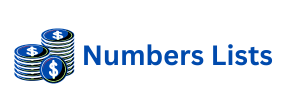The Foundation of Effective Content Writing and Semantic SEO
In today’s digital landscape, effective content writing is paramount. It is not enough to simply publish text. Content must be valuable and relevant. Semantic SEO represents a powerful approach. It moves beyond just keywords. This method focuses on user intent. It also considers the broader context of topics. Understanding these nuances helps search engines. They can better interpret your content. This leads to higher rankings. It also brings more qualified traffic to your site. A strong content strategy begins here. It aligns your writing with user needs. It also matches what search engines value. Semantic SEO ensures your content has depth. It builds authority and relevance.
Content must answer user questions thoroughly. It should explore related entities. This creates a richer user experience. It also signals expertise to algorithms. Integrating this strategy is crucial. It supports long-term growth. It establishes your site as a trusted resource. This holistic view of content is essential. It drives meaningful engagement. It also enhances visibility in search results. Every piece of writing contributes. It builds a comprehensive topical authority. This is a core tenet of modern SEO. Your content writing efforts become more impactful. They align with advanced search algorithms. Embrace this methodology for success.
The Power of External Backlinks in Content Strategy
Building a robust online presence requires more than just great content. It also demands external validation. This comes in the form of backlinks. An External Backlink is a hyperlink. It points from one website to another. These links are often seen as ‘votes of confidence’. They tell search engines your content is valuable. They signify authority and trustworthiness. Receiving backlinks from reputable sites is key. It can significantly boost your search rankings. These links also drive referral traffic. They introduce new audiences to your site. This expands your reach effectively. It strengthens your digital footprint.
Quality over quantity is vital here. A few strong external links are better. They outperform many low-quality ones. Seek out authoritative domains. They should be relevant to your industry. Earning these links takes effort. It often involves creating exceptional content. Outreach strategies are also common. Guest posting can be effective. Broken link building is another tactic. Partnerships with other websites help. Remember, these links are a signal. They show your content is a credible source. They validate your expertise in a given field. This is fundamental for SEO success.
Crafting High-Quality External Backlink Opportunities for Content
To acquire valuable external backlinks, focus on creating link-worthy content. This means producing unique insights. Offer data, research, or innovative perspectives. Long-form guides perform well. Infographics are also highly shareable. Original case studies attract attention. These content types naturally earn links. They provide genuine value to readers. Other site owners will want to reference them. They will link back to your work. This organic process is ideal. It indicates true content quality. Promote your best content strategically. Share it across social media platforms. Engage with industry leaders. Let them know about your resources. This increases visibility for your linkable assets.
Building relationships is another important part. Connect with other webmasters. Engage with industry influencers. This can open doors for collaboration. These collaborations may lead to natural backlinks. Think about co-creating content. Consider joint research projects. These efforts build community. They also create shared value. This makes linking a natural outcome. Monitor your backlink profile regularly. Ensure links are coming from good sources. Disavow any harmful or spammy links. Maintain a clean and healthy link profile. This protects your SEO efforts. It ensures sustainable growth over time. Proactive management is essential.
Maximizing Your Website’s Authority with Internal Backlinks
While external links bring authority from other sites, internal links build authority within your own. An Internal Backlink connects one page of your website to another. These links are crucial for navigation. They guide users through your content. They also help search engine crawlers. Crawlers discover and index new pages. A well-structured internal linking strategy improves user experience. It keeps visitors on your site longer. It distributes ‘link juice’ or authority across your pages. This boosts the SEO performance of less visible content. It reinforces the hierarchy of your site. This helps search engines understand your site’s structure.
Strategic internal linking can highlight important pages. It can direct users and crawlers to cornerstone content. Cornerstone content represents your most valuable articles. These are typically comprehensive guides. They address core topics within your niche. Linking to these pages from many other relevant posts is effective. It signals their importance to search engines. Use descriptive anchor text for internal links. This text should accurately reflect the linked page’s content. Avoid generic phrases like “click here.” Instead, use specific keywords. This further aids search engines. It enhances the context of the link. It improves user understanding.
Strategic Internal Linking for Enhanced User Experience and Content SEO
Develop a clear internal linking structure. This often mirrors your site’s hierarchy. From broader category pages, link to specific articles. From individual articles, link to related content. Always consider the user’s journey. What information might they need next? Provide seamless transitions between topics. This keeps them engaged on your site. It encourages deeper exploration. This thoughtful approach benefits both users and SEO. It reduces bounce rates. It increases time spent on site. These are positive signals for search engines. They indicate high-quality content and user satisfaction.
Audit your internal links periodically. Check for broken links. Ensure all links are still relevant. As your content library grows, new linking opportunities emerge. Integrate new content into your existing structure. Link to older, relevant posts from fresh articles. This refreshes their visibility. It reinforces their value. Internal linking is an ongoing process. It requires attention and refinement. A strong internal link profile makes your site more navigable. It also makes it more authoritative. This dual benefit is powerful for any content writing strategy. It helps achieve better search engine rankings. It creates a truly interconnected web of information.
